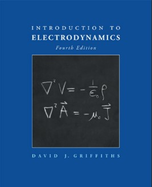Solution Found!
A familiar demonstration of superconductivity (Prob. 7.44)
Chapter 7, Problem 45P(choose chapter or problem)
Problem 45P
A familiar demonstration of superconductivity (Prob. 7.44) is the levitation of a magnet over a piece of superconducting material. This phenomenon can be analyzed using the method of images.31 Treat the magnet as a perfect dipole m, a height z above the origin (and constrained to point in the z direction), and pretend that the superconductor occupies the entire half-space below the xy plane. Because of the Meissner effect, B = 0 for z ≤ 0, and since B is divergenceless, the normal (z) component is continuous, so Bz = 0 just above the surface. This boundary condition is met by the image configuration in which an identical dipole is placed at −z, as a stand-in for the superconductor; the two arrangements therefore produce the same magnetic field in the region z > 0.
(a) Which way should the image dipole point (+z or −z)?
(b) Find the force on the magnet due to the induced currents in the superconductor (which is to say, the force due to the image dipole). Set it equal to Mg (where M is the mass of the magnet) to determine the height h at which the magnet will “float.”
(c) The induced current on the surface of the superconductor (the xy plane) can be determined from the boundary condition on the tangential component of B (Eq. 5.76): Using the field you get from the image configuration, show that
where r is the distance from the origin.
Refer Prob. 6.3.]
Find the force of attraction between two magnetic dipoles, m1 and m2, oriented as shown in Fig. 6.7, a distance r apart, (a) using Eq. 6.2, and (b) using Eq. 6.3.
Eq. 6.2.
Eq.6.3
Questions & Answers
QUESTION:
Problem 45P
A familiar demonstration of superconductivity (Prob. 7.44) is the levitation of a magnet over a piece of superconducting material. This phenomenon can be analyzed using the method of images.31 Treat the magnet as a perfect dipole m, a height z above the origin (and constrained to point in the z direction), and pretend that the superconductor occupies the entire half-space below the xy plane. Because of the Meissner effect, B = 0 for z ≤ 0, and since B is divergenceless, the normal (z) component is continuous, so Bz = 0 just above the surface. This boundary condition is met by the image configuration in which an identical dipole is placed at −z, as a stand-in for the superconductor; the two arrangements therefore produce the same magnetic field in the region z > 0.
(a) Which way should the image dipole point (+z or −z)?
(b) Find the force on the magnet due to the induced currents in the superconductor (which is to say, the force due to the image dipole). Set it equal to Mg (where M is the mass of the magnet) to determine the height h at which the magnet will “float.”
(c) The induced current on the surface of the superconductor (the xy plane) can be determined from the boundary condition on the tangential component of B (Eq. 5.76): Using the field you get from the image configuration, show that
where r is the distance from the origin.
Refer Prob. 6.3.]
Find the force of attraction between two magnetic dipoles, m1 and m2, oriented as shown in Fig. 6.7, a distance r apart, (a) using Eq. 6.2, and (b) using Eq. 6.3.
Eq. 6.2.
Eq.6.3
ANSWER:
Step 1 of 3
Part a
We are required to find the direction of the image dipole point.
The image dipole will point downward.
